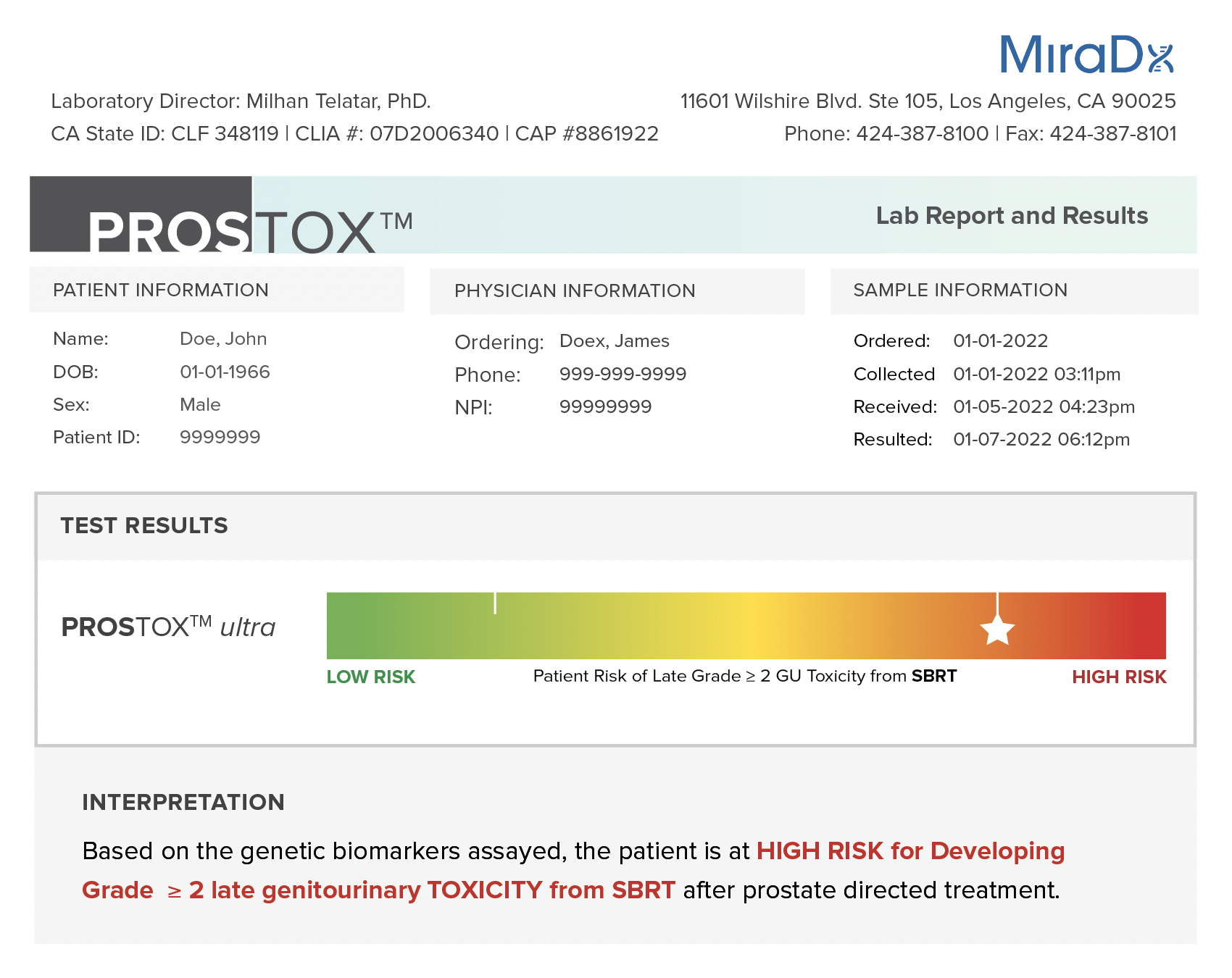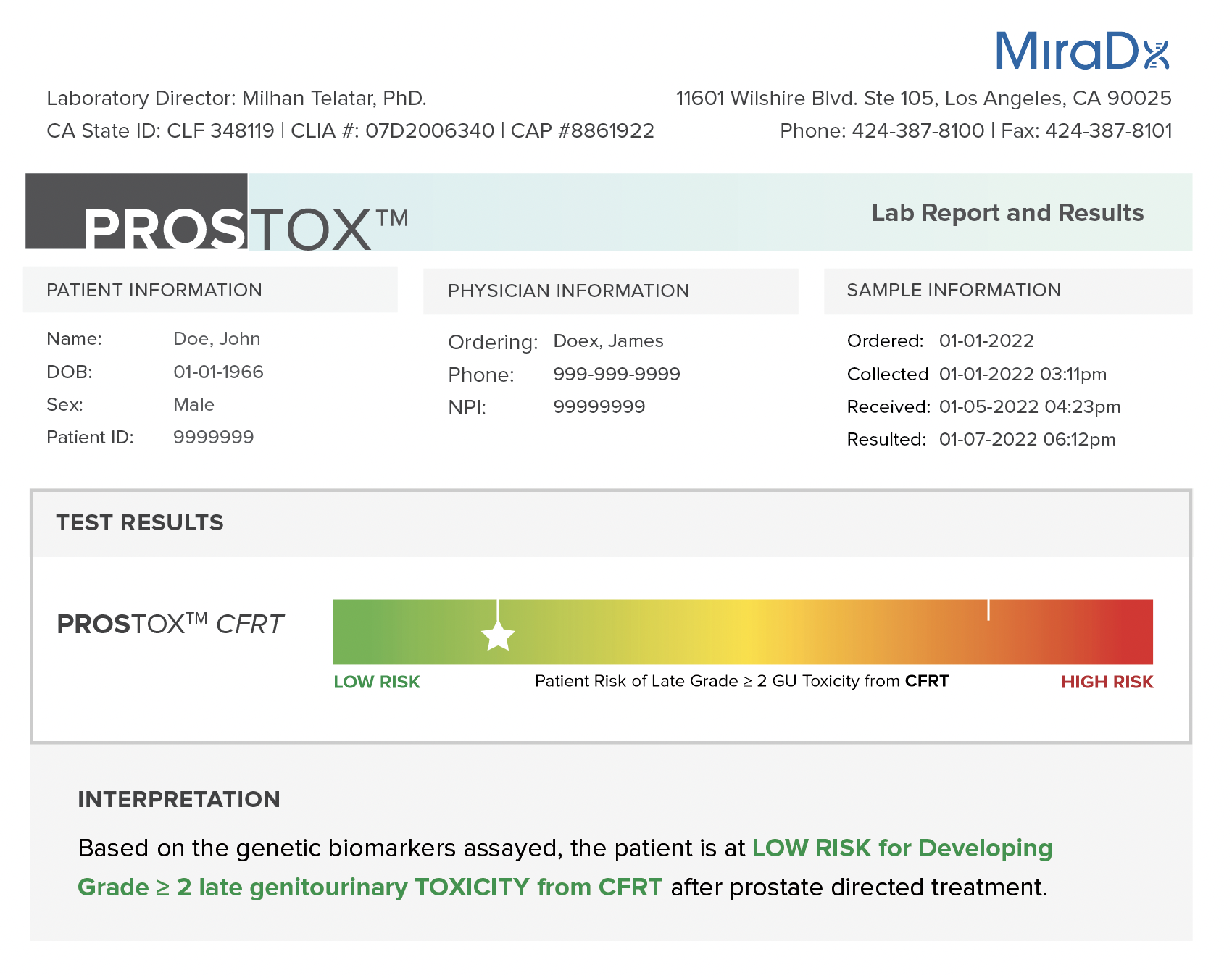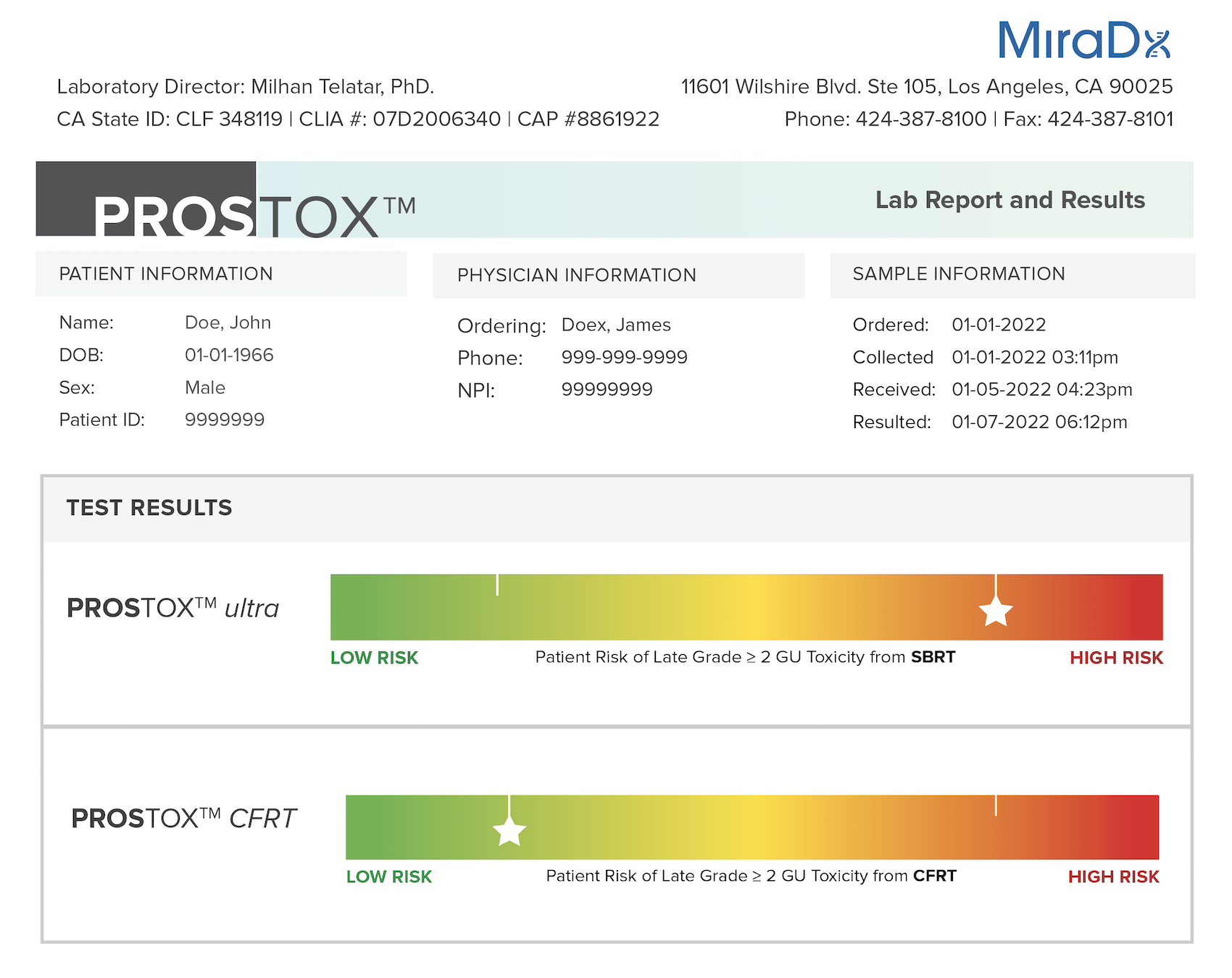Interpreting PROSTOX Results
We will issue a results report approximately 5-7 days after receiving a patient’s sample. The treating or ordering physician will receive an email link to access the report in the physician portal.
A high PROSTOX ultra result indicates that your patient has a ~65-80% risk of developing late-onset grade ≥ 2 genitourinary toxicity if treated with SBRT. A low PROSTOX ultra result indicates that your patient has a ~4-7% risk of developing late-onset grade ≥ 2 genitourinary toxicity if treated with SBRT.
Studies have shown that patients with a high-risk PROSTOX ultra result are ~8-10 times more likely to experience late GU toxicity than patients with a low-risk result.1,2
The risk stratification into high and low risks of late GU toxicity by PROSTOX can help physicians and their patients decide on the safest course of radiation treatment.3
Sample High Risk Report

Sample Low Risk Report

Sample Report for Both Tests

PROSTOX
References:
- Kishan AU, et al. Germline variants disrupting microRNAs predict long-term genitourinary toxicity after prostate cancer radiation. Journal for Radiotherapy and Oncology 2022;167:226-232. doi: 10.1016/j.radonc.2021.12.040.
- Kishan et al. Validation and Derivation of MicroRNA-based Germline Signatures Predicting Radiation Toxicity in Prostate Cancer. Clin Cancer Res 2025.
- Weidhaas et al. Early findings from the GARUDA trial: The impact of a genetic signature of late radiation toxicity on prostate cancer treatment decision making. ASCO 2023.
